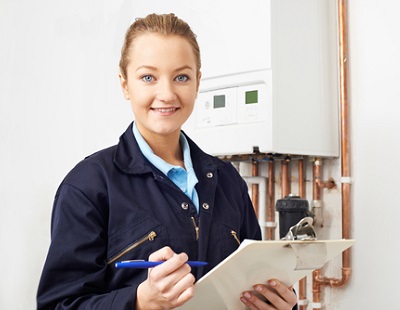This will come as a major change to how most of the UK population uses energy, with 95 per cent of UK households using central heating. However, with 40 per cent of the UK emissions coming from domestic households, it’s clear the government may need to extend the ban to hit target.
A recent study by business energy retailer Love Energy Savings, revealed that 44 per cent of the UK public are worried that they will have to foot the bill for the UK government to hit net zero in 2050.
To ease these concerns it’s important to know exactly who will be affected and when.
-
How will I be affected?
Government plans are for new build properties. There are currently no plans to replace boilers using gas in older homes. So, if you’ve recently purchased a new boiler, you’re safe.
Much of the debate is around what the UK Government is doing to improve the energy efficiency of an existing home. This would see the UK make larger strides towards achieving net-zero, however, it would cost significantly more to implement.
A report issued by the Committee on Climate Change said that it would cost a staggering £26,300 to replace central heating systems in older properties with low-carbon heating, in comparison to just £4,800 in new builds.
Buyers will not be affected by the introduction of heat pumps but will have to ensure they’re on the right home energy tariff once they move into their new home.
If you’re planning on building your own home after 2035 you will be required to install a non-gas alternative. Though the government has announced a subsidy programme, where you could receive between £4,000 and £7,000.
For developers and manufacturers, there are some challenges around increasing availability of the technology in the supply chain, with additional training required for installers. The government is set to announce details around installer training in due course.
-
What does this mean for new build energy bills?
With a few alternatives available, each new build developer may opt for different types of heating systems.
The current proposal indicates that new homes in the UK will run on low-carbon heat pumps, and the scheme expects to install 2.5 million heat pumps by 2030.
Using hydrogen to heat homes will be a huge step in the right direction for climate change. An added benefit to the homeowner is that heat pumps are also much cheaper to run and will lead to a much larger saving on monthly energy bills.
What are my options if I don’t live in a new build?
Heat pumps
Heat pumps are much more energy efficient as they draw heat from a renewable source. The complicated process involves drawing warmth from the earth or air and then transfers it to a liquid. The liquid is then compressed to heat the temperature and transferred around your home.
If you’re looking to reduce your carbon footprint and are attracted to lower energy bills, installing a heat pump into your existing home may seem like a great option. Despite no immediate plans, the UK Government is aggressively pushing towards the net-zero target and many suspect that they will eventually create plans to phase out gas boilers altogether.
However, it may not be the right time to invest. Installing a heat pump into an existing home is very expensive. According to the Renewable Energy Hub, you can expect to pay anywhere from £11,000 to £15,000. Even with the Domestic Renewable Heat Incentive allowing homeowners to spread installation costs over seven years, the price puts many people off.
-
Electric heaters
Electric heaters come with higher electricity bills. As electricity is more expensive per kWh than gas, UK households must be much smarter when switching electricity suppliers. This may mean exploring new tariffs such as Economy 7 (especially if you can program your storage heater).
There are some electric heaters with more energy efficient technology, so if you choose to go with this option, you’ll need to pay extra for more energy efficiency.
-
What can I do now to reduce my carbon footprint?
Some independent energy suppliers have entered the market only supplying renewable energy tariffs and switching to a green energy tariff doesn’t necessarily mean you will be paying more for your home energy. In fact, some of the best deals on the market are green energy tariffs.
Use a comparison engine to take a look at the wide selection of tariff options available and you may be able to lower your footprint without breaking the bank on a new heating system.
*Rosie Macdonald is a former estate and letting agent. She represents Love Energy Savings.
We're excited to announce that we're working on building a shiny new website for readers of Landlord Today! As part of this process, commenting on articles will be temporarily disabled. We look forward to sharing our new and improved Landlord Today website with you shortly!








.png)

(1).png)







.jpg)






%20(002).png)




